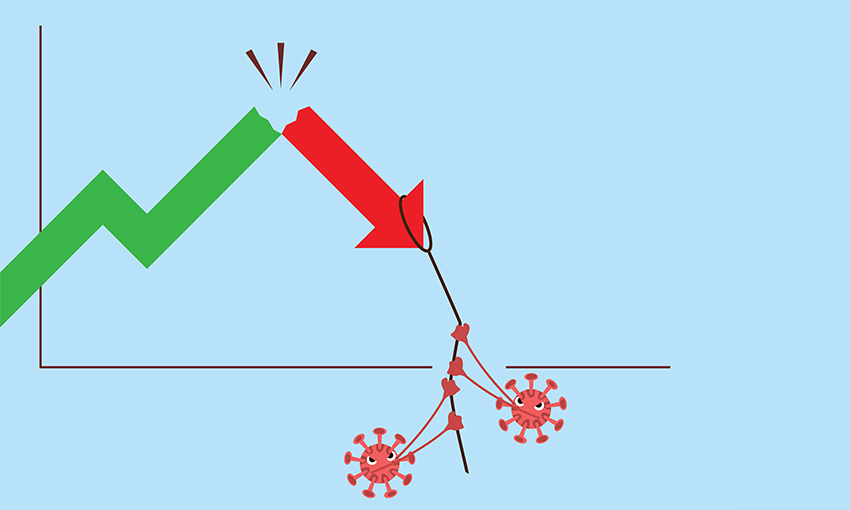THE spread of the global pandemic ‘coronavirus’ has had a devastating impact on markets across the world. The virus has spread with devastating speed and destruction, wreaking havoc on global markets and threatened to push world economies in to recession. The problem is the uncertainty that has been created and inability of markets to quantify the impact on economies and thus act accordingly.
The ‘coronavirus’ was centred on the genesis hot-spot of Wuhan, China. This has quickly spread across the globe, contagious to both people and markets. The inability to calculate the scale and the impact on the supply chain and the flow through to economic activity, sparked uncertainty, which has led to panic. The spread has been highlighted by Italy in Europe, Iran in the Middle East and across the world. Governments have worked hard to calm markets and their citizens, with coordinated fiscal and monetary responses, on a grand scale.
Global share markets have had a full-on melt down, moving quickly from ‘correction territory’ into a full on ‘bear market’. US Bond Yields have led interest rates lower, followed and confirmed by central banks, while commodity demand has crashed, along with pricing. The supply chain has been broken and commodity demand has crashed.
The actual ‘coronavirus’ has spread quickly and with devastating impact, but it is the uncertainty and fear generated by the scope of transmission, that has caused the destruction in the markets. It is the failure to comprehend and calculate the magnitude of the impact of this crises on markets that has led to the uncertainty and the collapse in markets.
The speed of this emerging apocalypse has been destructive and devastating, but it is the end game, that must be considered. The spread in the genesis hot-spots of China and South Korea has slowed considerably and infection rates are falling back to nearly zero. This could be considered the GPS for developments in the developed world, giving some hope. There are particular industries that have suffered more than others, led by travel, education, events/sports, leisure etc. Tailored solutions will need to be offered by authorities to avoid long term negative impacts.
What will be the long term consequences? Is this foray into ‘bear market’ territory long term or temporary? Will this drive global economies into recession or will fiscal and monetary actions avoid this scenario?
The spread of this crises has been unexpected, immediate and destructive, but ‘black swan’ events happen and markets cope. The spread of this global health crises, has drawn quick and effective actions from most government institutions, but has exposed their vulnerabilities. This crises has exposed the central banks and their expansionary monetary policies, in part employed to cover fiscal vandalism and government largesse. The biggest illustration of this is the ECB. Their answer to the GFC (12 years ago), was to cut interest rates to stimulate growth and fund massive deficits and debt levels, being carried by both the private and public sectors. The EU never addressed the deficit and debt and central banks never returned to a more normalised monetary policy, thereby facilitating this economic vandalism. The problem is not realised until a crises of this magnitude comes along and the sudden realisation there are no more weapons in the monetary armoury, to combat the crises.
The Federal Reserve, RBA and Bank of England had all left some ammunition in the box and as such, have acted quickly and aggressively, in coordination with governments to drop fiscal liquidity bombs into markets, to ease the panic. There is light at the end of the tunnel and we can look to China and South Korea as a guide to how this story will unfold. The US government, I would argue, will lead its allies through this crisis and there will be a recovery. Markets always fall much quicker than they rise.
The question asked is “whether the coordinated remedial actions, taken by government and institutions, will be enough to stave off recession?” In stronger economies, such as the US and Australia, this is altogether probable, but the weaker more vulnerable economies may fall into a recession.
The massive volatility in bond and equity markets has infected currency and credit markets, but not to the same extremes. The trade exposed commodity currencies have been vulnerable to downside, as the existing supply chain falls apart and commodity demand plunges. ‘Safe Haven’ flows usually head to the strongest economy and currency and that is the US and the Dollar. This will amplify in the weakness of the AUD, which looks set to test GFC lows (in the low 60s). Any breach in these historical support levels will raise big red flags, but if this support is confirmed and consolidated, the Australian government actions (in conjunction with the RBA) may avert catastrophe and a fall into recession. Time will tell when the dust settles.

